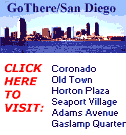

……but thanks for the memories….
Visit Tampa,
Florida
|
 |
After a bitter primary, Dole had secured the Republican
nominationóbut at high cost, financially and politically. The Party had lost
momentum after President Bill Clinton successfully co-opted the historically
Republican issues of crime and welfare reform and portrayed House Speaker Newt
Gingrich as an extremist.
Within his own party, Dole was under pressure from both sides of the political
spectrum. Social liberals such as California Governor Pete Wilson and
Massachusetts Governor William Weld loudly argued to remove the Human Life
Amendment plank from the convention platform. On the right, primary opponents
Patrick Buchanan and Alan Keyes withheld endorsementsóBuchanan staged a rally
for his supporters in San Diego on the evening of the convention. Indeed, past
comments by Kemp labeling Dole as a tax-raiser surfaced. The long, bitter
primary had also left the Dole campaign short of funds due to federal election
spending limits in the months leading up to the convention.
The Dole campaign sought to use the convention to unite the party, to appeal to
political moderates, and to highlight Dole's honorable service in World War II
and in the U.S. Senate. Nearly all floor speeches were delivered by moderate or
liberal Republicans, including the keynote address by New York Congresswoman
Susan Molinari, and Dole was nominated by fellow veteran and Arizona Senator
John McCain. Gingrich, who less than two years ago had been a star of the party,
was denied a prime time slot altogether. However, supporters in the socially
conservative grassroots organizations such as the Christian Coalition directed
the convention to adopt a conservative platform with little controversy, and in
the event, Buchanan released his delegates at the last minute.
The convention ran smoothly overall, and the Dole-Kemp team seemed to benefit in
the short term. Opinion polls taken shortly after the conclusion of the
convention showed the Republicans with a significant "bump" of increased
support. They continued to trail the incumbent Clinton-Gore team, however, and
failed to win the election.
WHEN YOU COME BACK, HERE'S WHAT TO SEE AND DO IN SAN DIEGO:
![[photo]](conv96sd/gaslamp.jpg) Gaslamp Quarter -- The historic
heart of downtown San Diego. Sixteen blocks of fine dining, night life and Victorian
charm. Easy walking distance from the Convention Center
Gaslamp Quarter -- The historic
heart of downtown San Diego. Sixteen blocks of fine dining, night life and Victorian
charm. Easy walking distance from the Convention Center
![[PHOTO]](conv96sd/horton.jpg) Horton Plaza -- Seven city blocks of
shopping, dinning and entertainment. Over 140 shops including Ann Taylor, Banana Republic,
Nordstrom and Planet Hollywood. A convenient walk from downtown hotels and the Convention
Center
Horton Plaza -- Seven city blocks of
shopping, dinning and entertainment. Over 140 shops including Ann Taylor, Banana Republic,
Nordstrom and Planet Hollywood. A convenient walk from downtown hotels and the Convention
Center
![[photo]](conv96sd/oldtown.jpg) Old Town -- Many buildings from the
early days of San Diego; California's first permanent Spanish settlement. Many fine
restaurants and shops. Five miles from the Convention Center.
Old Town -- Many buildings from the
early days of San Diego; California's first permanent Spanish settlement. Many fine
restaurants and shops. Five miles from the Convention Center.
![[photo]](conv96sd/seaport.jpg) Seaport Village -- Near the
Convention Center, along San Diego's waterfront you'll find bayview dinning, unique shops
and an 1890 "flying horses" carousel.
Seaport Village -- Near the
Convention Center, along San Diego's waterfront you'll find bayview dinning, unique shops
and an 1890 "flying horses" carousel.
 Coronado --
Home to the historic HOTEL DEL CORONADO, fine shops and restaurants.
Coronado --
Home to the historic HOTEL DEL CORONADO, fine shops and restaurants.
For the 1996
Republican National Convention
in San Diego, California
the Official Web site of the
San Diego County Republican Party
was produced by:
"GoThere before you go there."
The 1996 RNC was the first presidential nominating convention
to be held in San Diego, and the first and only Republican National Convention
held in Southern California. Indeed, San Diego's bid had been considered
unlikely to win. The SDCC was far smaller than its predecessor venues, the
Astrodome in Houston and the Louisiana Superdome in New Orleans, and its normal
seating layout left several sections and skyboxes with obstructed views. Ardent
lobbying by Mayor Susan Golding, who some named as a potential candidate for
U.S. Senate in 1998, and by Governor Wilson, himself to seek the 1996
presidential nomination, helped secure San Diego's selection in 1994. The San
Diego Host Committee, "Sail to Victory '96," was organized on September 8, 1995.
It would also be the first national party convention since the 1995 Oklahoma
City bombing, which sparked heightened concerns over terrorism. The possibility
that the explosion of TWA Flight 800 weeks before was a terrorist incident also
weighed on convention planners. The Convention Center was located on the
waterfront, near a harbor frequented by thousands of small boatsóupon one of
which Dole and Kemp made their ceremonial arrival. The police, Coast Guard, and
other and security presence was massive.
Convention planners situated the designated protest area several blocks away
from the convention center, sparking criticism and legal action. It was later
moved to a parking lot closer to the building which had originally been
designated as a transportation center for the handicapped.
The convention was successful for San Diego, bringing positive publicity to the
city and its revitalized waterfront and Gaslamp Quarter. The convention
committee, however, overran its budget by some $20 million, due to the extra
costs of security.
From
Wikipedia